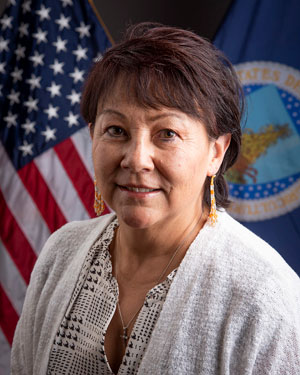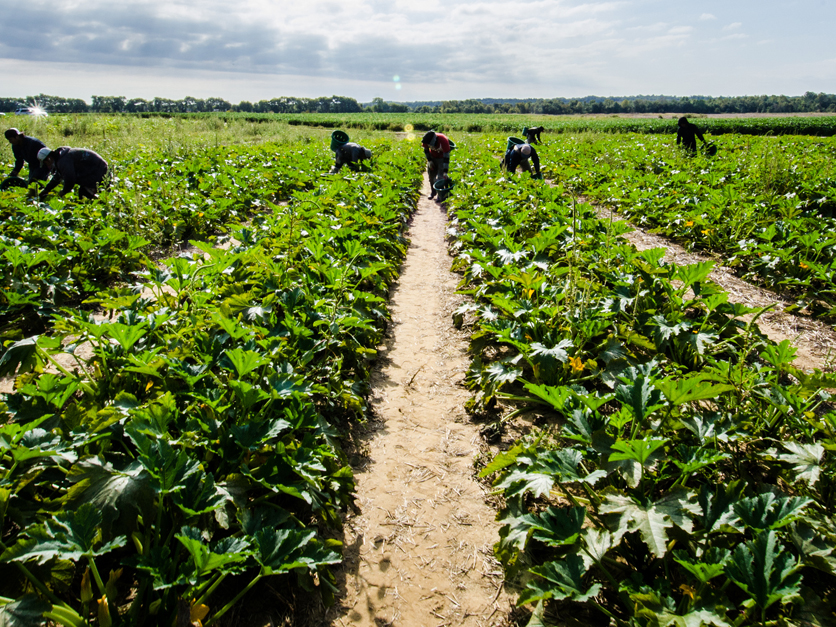USDA is expanding and enhancing crop insurance products for fruits, vegetables and other specialty crops and considering some additional steps that could help address the sector’s priorities.
“It’s never the end for change and expansion and revisions, because we are always open to continuing to get feedback on how to improve it,” Marcia Bunger, administrator of USDA's Risk Management Agency, said in an interview with Agri-Pulse.
Some additional funding and statutory authority may be needed in the next farm bill to make changes growers would like to see, she said.
Nevertheless, she said there appears to be “a significant level of satisfaction” with the latest revisions, which have included liberalizing the Whole Farm Revenue Protection program and approving the first insurance product specifically designed for indoor growing, or controlled environment agriculture (CEA).
WFRP was originally designed with specialty crop growers in mind but has struggled to gain traction because of limits on coverage, extensive recordkeeping requirements and a commission scale that has failed to attract many agents.
 RMA Administrator Marcia BungerTo try to make WFRP more attractive to growers, RMA doubled the maximum revenue that could be covered to $17 million for 2023 and conducted a series of educational “roadshows” to promote both WFRP and the Micro Farm revenue policy, which has a simplified application process and is a version of WFRP targeted to smaller operations; the Micro Farm insurance limit was raised to $350,000 for 2023.
RMA Administrator Marcia BungerTo try to make WFRP more attractive to growers, RMA doubled the maximum revenue that could be covered to $17 million for 2023 and conducted a series of educational “roadshows” to promote both WFRP and the Micro Farm revenue policy, which has a simplified application process and is a version of WFRP targeted to smaller operations; the Micro Farm insurance limit was raised to $350,000 for 2023.
Additional WFRP revisions in 2024 will allow all eligible producers to qualify for 80% and 85% coverage levels; those coverage levels have been limited to producers who insured at least three commodities.
RMA also will allow producers to buy catastrophic-level policies under WFRP. CAT coverage, which is fully subsidized by the government, covers 50% of a farmer’s yield and 55% of the price election or projected price.
For crops not covered by another type of policy, RMA is expanding the yield history that’s used to calculate WFRP revenue coverage from four years to 10 years. Another change will allow producers to customize their WFRP coverage by choosing at claim time whether other policies should be considered their primary insurance.
To help promote sales of Micro Farm, RMA is changing the sales closing date to a less busy time of the year for agents.
Bunger said she would still like to make it easier for beginning farmers to buy Micro Farm. Farmers are required to have at least three years of records before they can qualify, which limits the time they will be eligible for premium discounts. Changing those rules “would take probably a bigger lift on our part, because we still have to maintain actuarial soundness” of the program, she said.
Bunger expects the revisions that take effect in 2024 should help boost WFRP sales. The 2023 changes may have already had an impact. Sales of WFRP had fallen every year until 2023 after peaking in 2017 at 2,833 policies. Sales rose modestly to 1,875 this year, with $2.3 billion in liabilities, up from 1,810 in 2022.
Some 95 Micro Farm policies with $6.5 million in liabilities were sold for 2023.
What RMA hasn't really addressed is the reluctance of some agents to sell WFRP policies because they don’t think the commissions are high enough to justify the work that’s required to write them. Bunger said it’s up to approved insurance providers, or AIPs, to change the commission scale. RMA’s “contractual relationship is with the AIPs, it's not with the agent,” Bunger said.
Advocates of smaller farms don’t think RMA has gone far enough to improve the WFRP and Micro Farm products.
A bill championed by six Senate Ag Committee Democrats — the Whole Farm Revenue Protection Program Improvement Act — would authorize a series of other enhancements, including ensuring that Schedule F returns are sufficient for establishing a farm’s revenue history.
USDA also would be required under the bill to increase incentives to agents to sell the policies and to consider expanding the premium discount for diversified farms to include growers who use a resource-conserving crop rotation.
Additionally, the Micro Farm revenue limit would be raised from $350,000 to $1 million under the bill.
Billy Hackett, a policy specialist for the National Sustainable Agriculture Coalition, said the bill would remove many of the remaining barriers to small farmers participating in WFRP through the Micro Farm option.
Increased financial incentives to agents are important because many are reluctant to handle the policies, he said. “Farmers cannot find the agents who are willing to sell the product to them,” Hackett said.
Meanwhile, RMA continues to search for ways to address another problem that limits USDA’s ability to offer revenue protection policies to many specialty crop growers — the lack of pricing data on thinly traded commodities.
It’s easy to be “in the know” about what’s happening in Washington, D.C. Sign up for a FREE month of Agri-Pulse news! Simply click here.
“Just because somebody says 'Oh, yeah, today I sold my whatever crop for this price,' that doesn't mean that that should be the price,” Bunger said.
She said RMA is looking at addressing that issue, in part, by using pricing data compiled by the Farm Service Agency under the Noninsured Crop Disaster Assistance Program, or NAP. RMA doesn't have a timeline for the project.
Also next year, RMA has approved the sale of the first insurance products designed specifically for controlled environment agriculture. The policies will cover losses from diseases that occur when there is a government-ordered destruction order.
But Tom Stenzel, who heads the Controlled Environment Agriculture Alliance, said the policy would likely have limited impact.
The policy “would be helpful for Tomato Brown Rugose Fruit Virus, but hopefully [USDA’s Animal and Plant Health Inspection Service] is in the process of changing that quarantine rule,” Stenzel said in an email. “I’m not aware of other circumstances where a government destruction order might be anticipated.”
Viraj Puri, founder of Gotham Greens, which has CEA operations stretching from New York to Davis, California, said in a LinkedIn post the new program was a “significant step in leveling the playing field for innovative and sustainable production methods like greenhouse cultivation.”
 Tom Stenzel, Controlled Environment Agriculture Alliance
Tom Stenzel, Controlled Environment Agriculture AllianceBut he also said the policy “has a long way to go to provide the same level of federal support to innovative agricultural producers as is provided to conventional agricultural producers.” Coverage is limited to certain counties in 25 states.
He didn’t specify what other types of coverage he wanted USDA to provide, and the company didn’t immediately respond to a request for more information.
Puri noted that the 2018 farm bill specifically directed USDA to develop crop insurance for CEA operations.
The Controlled Environment Agriculture Alliance didn’t include any crop insurance proposals in its farm bill recommendations released in March.
RMA also is expanding coverage for several specialty crops in 2024. Grape producers in California, Idaho, Michigan, New York, Ohio, Oregon, Pennsylvania, Texas, and Washington will be able to buy policies that cover losses for fruit growing on vines damaged by a freeze, fire, hail, flood, the failure of irrigation water supply, or other losses.
Kiwifruit producers in 12 California counties can buy insurance next year to protect against weather-related losses and other naturally occurring problems.
For more news, go to Agri-Pulse.com.


